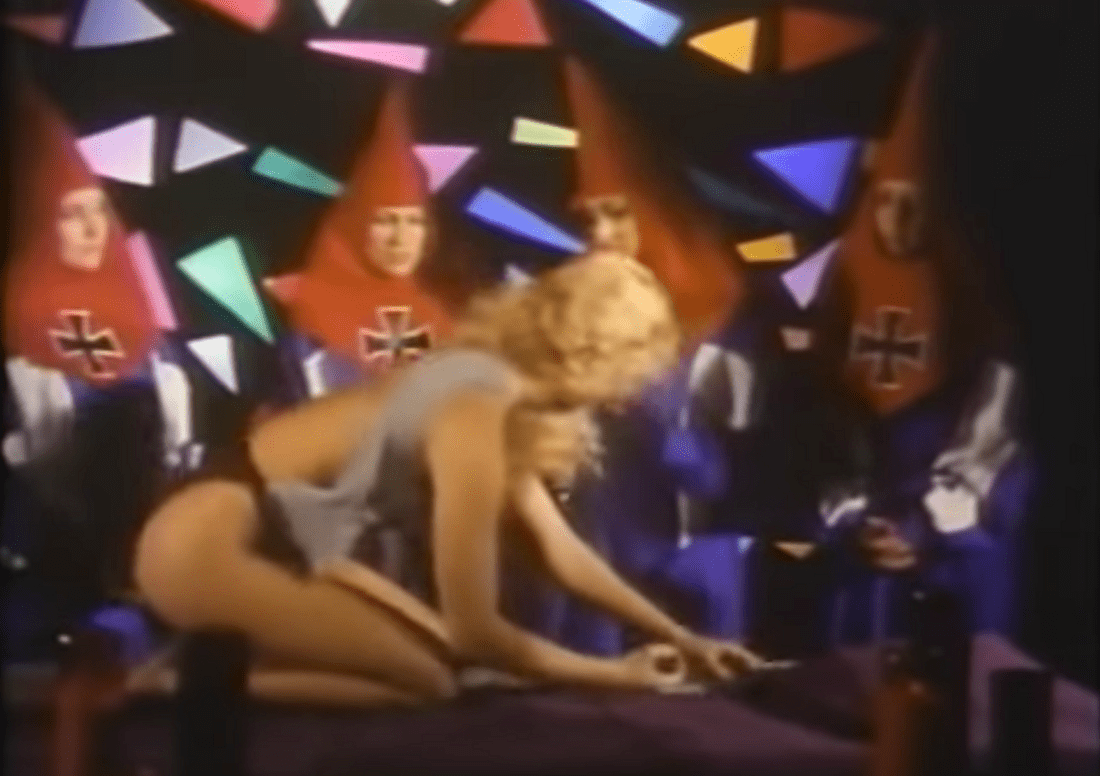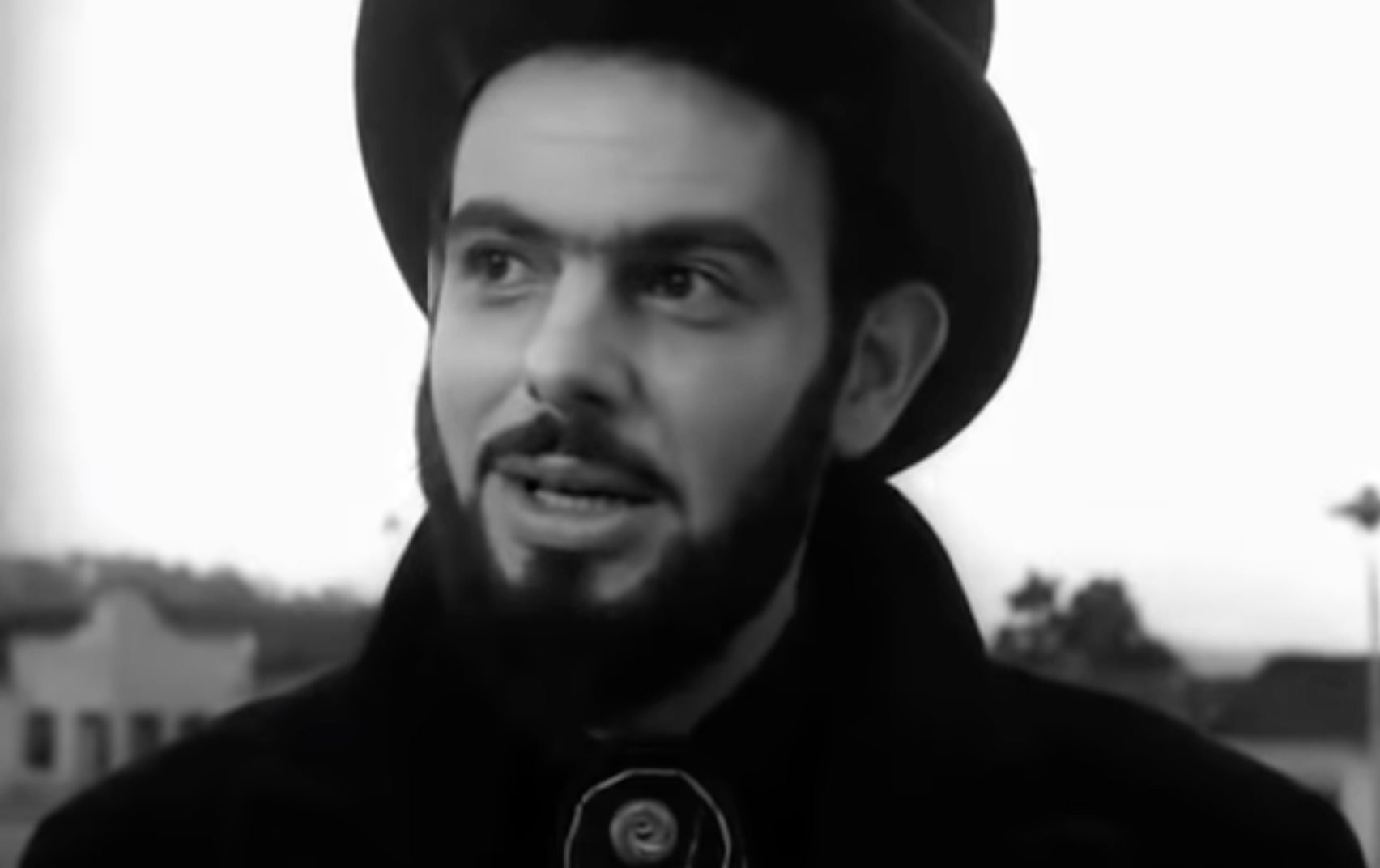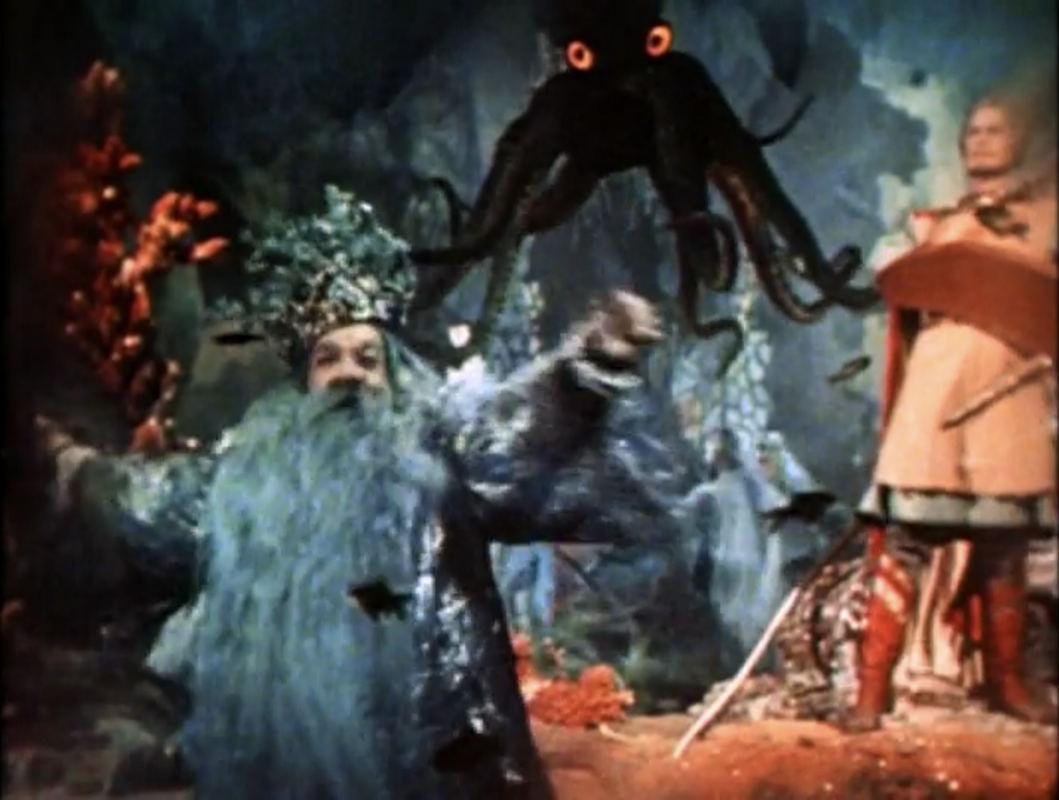
Vordum: Price of Death is not for everyone. I grew up watching Ray Harryhausen films, and as a result, I have a deep abiding love for stop-motion animation. If you’re not into stop-motion, Vordum’s hour-and-a-half runtime might be challenging. It would also help if you liked monsters and gory violence. Vordum is 85% fighting, but between each fight, we are given ruminations on the meaning of life. Russian ruminations on the meaning of life. "Russian" meaning harsh, pragmatic, and grim. Surprisingly, the philosophizing is not a shallow aping of existentialism, it actually has some substance.
The entire film takes place in a gladiatorial arena. There are only two sets: the arena, and the holding cell where the combatants await their turn. The discussions take place between a small band of muscular people who have come to the arena to get an audience with the gods. Each of them has a wish they hope the gods will grant. To see the gods, they have to survive an onslaught of increasingly challenging opponents.

Just as in Tarkovsky’s Stalker, the discussion of what one would wish for is an opportunity to reflect on the meaning of life. In both films, there is a sense that an individual’s wish reveals the true nature of that person, and may reveal something deep about all humanity. In Stalker, the men finally reach a room where they can have their wishes fulfilled, but one of them suggests that those who enter the room might not get what they expect. He theorizes that it might be the room that determines what their deepest wish is, and only then grants it. A person might go in thinking he will get a pile of gold, but when he emerges, he finds his brother is dead.

(This paragraph contains spoilers) In Vordum, each character has his or her own reasons for being there. To add to the pressure, a plague is ravaging the world outside. The characters are not all muscle-bound He-Men. There are some women, some of whom are tough, some of whom are not, and an assortment of others. In the end, it turns out that even with almost all of the characters lying in a pile of bloody pieces on the arena floor, they each have their wish granted. They all remain dead, but the reason they came to the arena is fulfilled. Without their realizing it, their lives were posthumously given purpose through their sacrifice.
The film was made by Alexey Akhmetov and Ivan Akhmetov. I would not be surprised to find out that they were brothers who made this film in their basement. The film has no polish, but for the most part, I didn’t care.
The lighting was poor, but it can be very difficult on such a small scale. You need specialized equipment, which I’m guessing they did not have. They manage to avoid harsh shadows, but the overall effect can sometimes be a little flat.
The sound effects were good, but I think Alexey and Ivan chose to voice all the characters themselves. I can’t be sure, but that’s what it sounds like. This means that not only do all the characters sound extremely similar, but the female characters sound like men.

I hesitate to be too critical of Vordum, because as a whole, it is a truly impressive accomplishment. I have made some stop-motion videos myself, and it is grueling work. The action in Vordum is creative and completely engaging. There are a million ways to hack someone to death and Alexey and Ivan have fun exploring them. I wish the blood had been a little redder, but there’s plenty of it.
For a full-length feature film with only two elements, philosophizing and fighting, Vordum manages to deliver something with both prurient appeal and substance.
I imagine making this film was a long and arduous labor of love. No one spends that much time making little arrows and helmets and moving little figures in tiny, painstaking increments without a serious passion for the project. Vordum has made its way onto IMDb, but I am unable to find out much about it. I don’t know who Alexey and Ivan Akhmetov are, but watching their film opened the door for me to explore a little further into the Russian animation rabbit hole.

After finishing Vordum, I watched a video on YouTube called A Beginner's Guide to Soviet Animated Cinema, posted by kubricklynch. Fortunately, most of the animations he mentioned in the video were available for free on YouTube. So I sat myself down and had a Soviet animation film festival, starting in the 1920s and going all the way through the 20th century.
After watching them, I definitely feel like many of the films share a few themes. Half of them were campy propaganda, but sprinkled throughout were films that echoed Vordum’s ideas about moral dilemmas and the meaning of life.
There was one animation called Polygon, made in 1977 by Anatoliy Petrov. The film was only 10 minutes long, but it felt like something Kurt Vonnegut might have written. A Soviet scientist invites a group of generals to a deserted firing range to show them his new invention. He has made a tank that can seek out and target hate and aggression. It senses the emotions and then attacks the source. The generals are pleased, but ask if it can do anything more. The inventor explains that the tank can also sense and target fear. Maybe the setup is more akin to one of Isaac Asimov’s I Robot stories, where the audience is given a set of parameters and then witnesses how it can all go wrong, but either way, the results are interesting.

The tank kills one person who is understandably afraid of it. Then, when a second person sees what the tank has done, he attacks it in an effort to stop it. Of course, the tank kills him as well. Once the tank murders the second man, there is a chaotic spiral of fear and aggression that ends with the death of everyone involved. Of course, the film is a commentary on fear and aggression, but it also implies that indifference may be a strategy for survival, although it is not advocating indifference. In fact, the implication is that it is not only impossible to be indifferent, but it is immoral. However, passive indifference and acceptance are perhaps what many people choose. The film creates a situation that has no good solutions, but forces you to make a choice anyway.

I watched another animation called The White Room. I’m afraid I have very little information about who made it and when, but it may be another Akhmetov Bros. production. The premise is simple. Random people innocently wander into a doorway and end up sealed inside a mysterious white room. When they enter, the door they entered through disappears behind them. On the opposite wall, where the door was, is a lever. If you pull the lever and hold it down, the door reappears and opens. This means that no matter how many people are in the room, one of them must stay behind to hold the lever down while the others escape.
The film has no dialogue, but we watch a series of characters gesticulate and argue silently. Making us fill in the dialogue makes us consider the character's options. It places us in the room and, like in Polygon, we are forced to consider what we would do.
All of these themes are most simply expressed in the watercolor cartoon I watched next. It was called The Other Side and wasmade by Mikhail Aldashinin in 1994.
The film opens with a cute little worm nestled underground in a tiny chamber. He makes his way up toward the surface, and along the way, he meets another worm. Together, they emerge, and almost immediately, one is eaten by a bird. The bird comes after the second worm, but the worm burrows back down into the earth. He burrows deeper and deeper until he finally emerges on the other side of the Earth. He pokes his head out into the sunlight, only to find three birds waiting to eat him, and that is where the cartoon ends.

What do Vordum, The Other Side, Stalker, Polygon, and The White Room have in common? They all involve people who are trapped. A facile interpretation might assume that this is a metaphor for being trapped in the USSR, and perhaps there is an aspect of that, but there is more to it.
The characters are trapped by their own ethics (save the worm who is trapped by circumstance). The films all share an image of morality as an intractable knot that makes ethical action almost impossible. There is no good answer or solution to these conundrums, and so each character must make a deliberately bad choice, and then face the consequences.
In addition, all of them involve self-sacrifice, but even self-sacrifice does not necessarily solve the problems. Polygon ends with the tank still sitting in the sand, waiting for someone else to trigger the whole cycle again. In The White Room, one man volunteers to stay behind and hold the lever, but others will surely stumble into the trap. In Vordum, the combatant’s wishes are granted, but we have no idea what they wished for, or if the plague is stopped.
It’s a grim vision of humanity’s position in the universe, but at its heart, despite the moral confusion and the meaningless nature of our existence, the stories keep a firm grip on agency and personal responsibility.
Reflecting on all this, I was reminded of a Russian parable called The Frog and the Scorpion. It’s a simple story, and for expediency’s sake, I stole a succinct summary of it from Wikipedia - “A scorpion wants to cross a river but cannot swim, so it asks a frog to carry it across. The frog hesitates, afraid that the scorpion might sting it, but the scorpion promises not to, pointing out that it would drown if it killed the frog in the middle of the river. The frog considers this argument sensible and agrees to transport the scorpion. Midway across the river, the scorpion stings the frog anyway, dooming them both. The dying frog asks the scorpion why it stung despite knowing the consequence, to which the scorpion replies: 'I am sorry, but I couldn't resist the urge. It's in my nature.'”
Here again, we see that taking responsibility is what matters. The scorpion makes a terrible choice, a fatal choice, but he owns it. He finds strength in his ability to act, regardless of the result.
In Vordum, one of the gladiators says, “It does not matter what you die for. Death is always near. The only difference is how you fight your last battle.“

If you enjoyed this article you might also enjoy this - https://filmofileshideout.com/archives/voyage-to-the-prehistoric-planet/



